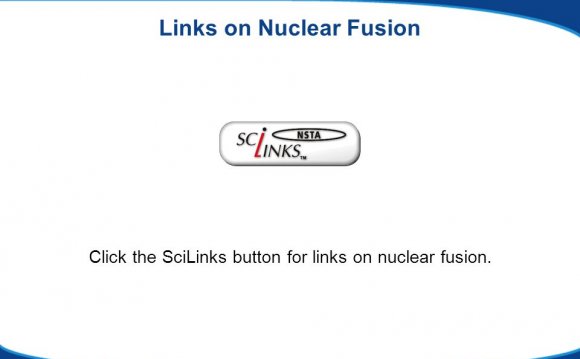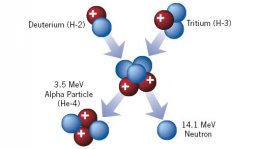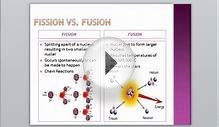
Fusion is the process by which the sun and other stars generate light and heat. It is a nuclear process, where energy is produced by smashing together light atoms. It is the opposite reaction to fission, where heavy isotopes are split apart.
It’s most easily achieved on Earth by combining two isotopes of hydrogen: deuterium and tritium. Hydrogen is the lightest of all the elements, being made up of a single proton and a electron. Deuterium, often called “heavy water”, has an extra neutron in its nucleus. Tritium has two extra neutrons, and is therefore three times as heavy as hydrogen. In a fusion cycle, tritium and deuterium are combined and result in the formation of helium, the next heaviest element in the Periodic Table, and the release of a free neutron.
Deuterium, is found one part per 6, 500 in ordinary seawater, and is therefore is globally available, eliminating the problem of unequal geographical distribution of fuel resources. This means that there will be fuel for fusion as long as there is water on the planet.
DID YOU KNOW?
Scientists from the Max Planck Institute for Plasma Physics in Greifswald, Germany, have demonstrated that it is possible to superheat hydrogen atoms to form a plasma of 80 million degrees Celsius using a machine called the Wendelstein 7-X stellarator. The plasma forms the basis for nuclear fusion, in which hydrogen atoms collide and their nuclei fuse to form helium atoms - a process which lets off energy and is similar to what happens in our sun.
What is Fusion Power?
Let us take look at a fusion reaction. You can see that as deuterium and tritium, the two heavy isotopes of hydrogen, fuse together, their component parts are recombined into a helium atom and a fast neutron. As the two heavy isotopes are reassembled into a Helium atom, you have ‘extra’ mass leftover which is converted into the kinetic energy of the neutron, according to Einstein’s formula: E=mc2.
 For a nuclear fusion reaction to occur, it is necessary to bring two nuclei so close that nuclear forces become active and glue the nuclei together. Nuclear forces are small-distance forces and have to act against the electrostatic forces where positively charged nuclei repel each other. This is the reason why nuclear fusion reactions occur mostly in high density, high temperature environment.
For a nuclear fusion reaction to occur, it is necessary to bring two nuclei so close that nuclear forces become active and glue the nuclei together. Nuclear forces are small-distance forces and have to act against the electrostatic forces where positively charged nuclei repel each other. This is the reason why nuclear fusion reactions occur mostly in high density, high temperature environment.
At very high temperatures, electrons are stripped from atomic nuclei to form a plasma (ionized gas). Under such conditions, the repulsive electrostatic forces that keep positively charged nuclei apart can be overcome, and the nuclei of select light elements can be brought together to fuse and form other elements. Nuclear fusion of light elements releases vast amounts of energy and is the fundamental energy-producing process in stars.
YOU MIGHT ALSO LIKE












